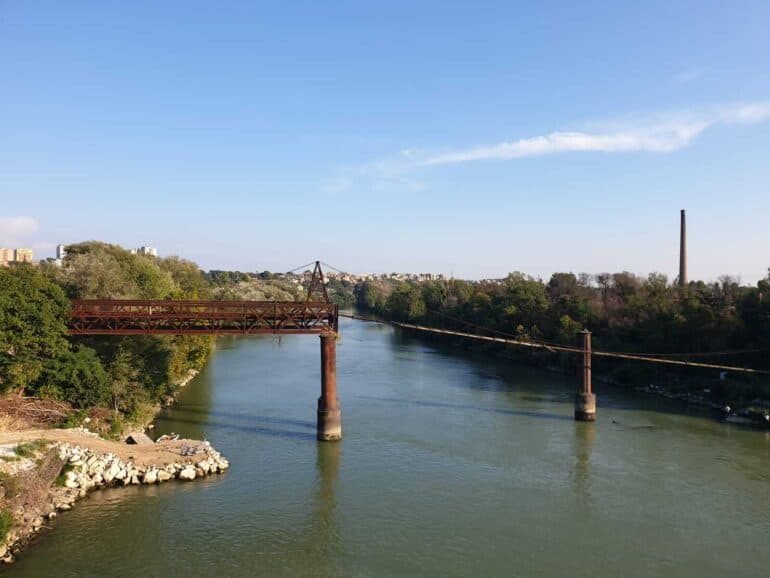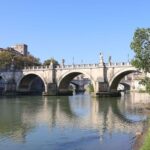From Etruscan to industrial ruins, natural landscapes, memories and events
Castel Giubileo is definitely off the beaten track. This gem at the river edges hasn’t yet been explored by the innumerable flaneurs that the eternal city hosts. A cycling lane connects Rome city centre to this Roman suburb through a 50-minute ride along the Tiber shore, making it an ideal excursion for those who are keen on outdoor and sporty activities. Not only do you get the chance of a long cycle by the river, but also a particularly fascinating one, during which the landscape takes many different shapes.
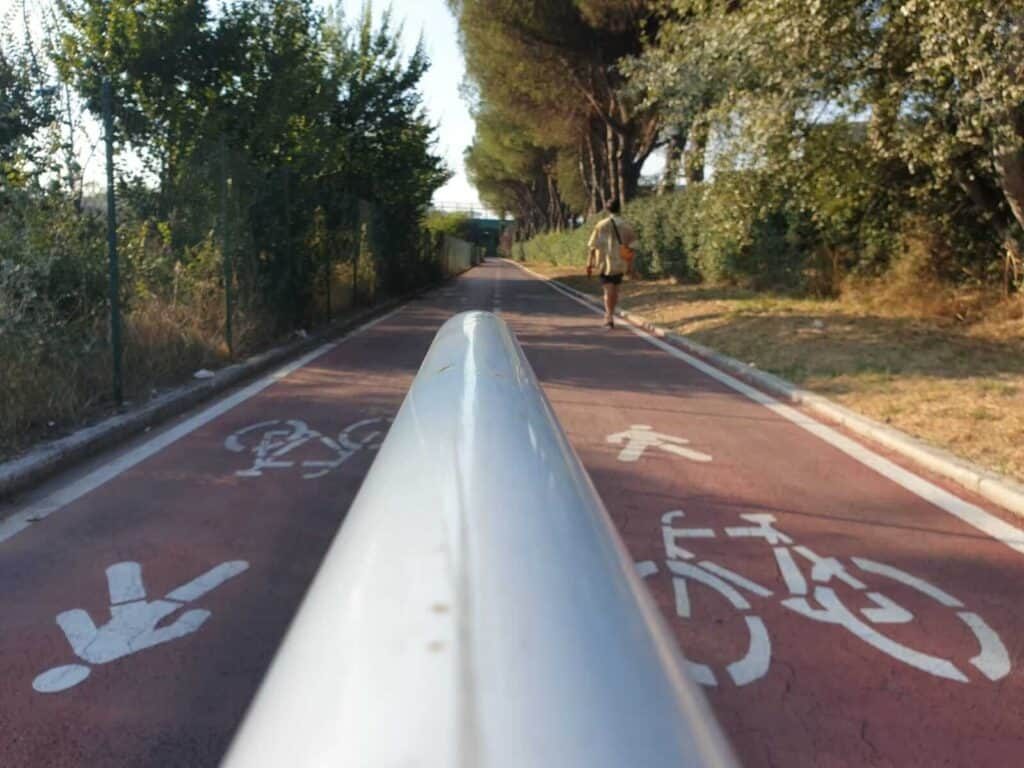
The route starts off by the ancient Castel Sant Angelo, built by the emperor Hadrian between AD 134 and 139, and then continues through the more modern features of the city. On one side, it is possible to see the Olympic stadium and the Foro Italico, while on the other, Ponte della Musica —the most recent pedestrian bridge in Rome. Before reaching its end, at the Castel Giubileo, the route still passes through beautiful natural landscapes. The more attentive eyes might also be able to get a glimpse of the local wildlife, which ranges from seagulls and ducks to cows and goats.
The village of Castel Giubileo is wedged between the Via Salaria, the GRA and the Tiber river. It is dominated by a hill which made it a strategic military location throughout history as the view from the top spans over tens of kilometres. Indeed, the ruins on the hill still today testify to the history of the territory, from the early Etruscan to then the Roman people. Besides watchtowers, an old farmhouse —built around 1300-1400, which is known to be the point from which Giuseppe Garibaldi set out to conquer the Vatican state in 1867— helps to tell the history of this place.
Another interesting construction in the area is a dam built in 1953, which represents one of the first architectural projects of the post-war period. In addition, there are a series of evocative industrial ruins, appealing to all those who are into urban photography, or seek a change from the world-known ancient ruins of the city. These include the remains of an iron bridge which carried pipelines and was bombed during the Second World War, and an old kiln that produced bricks.
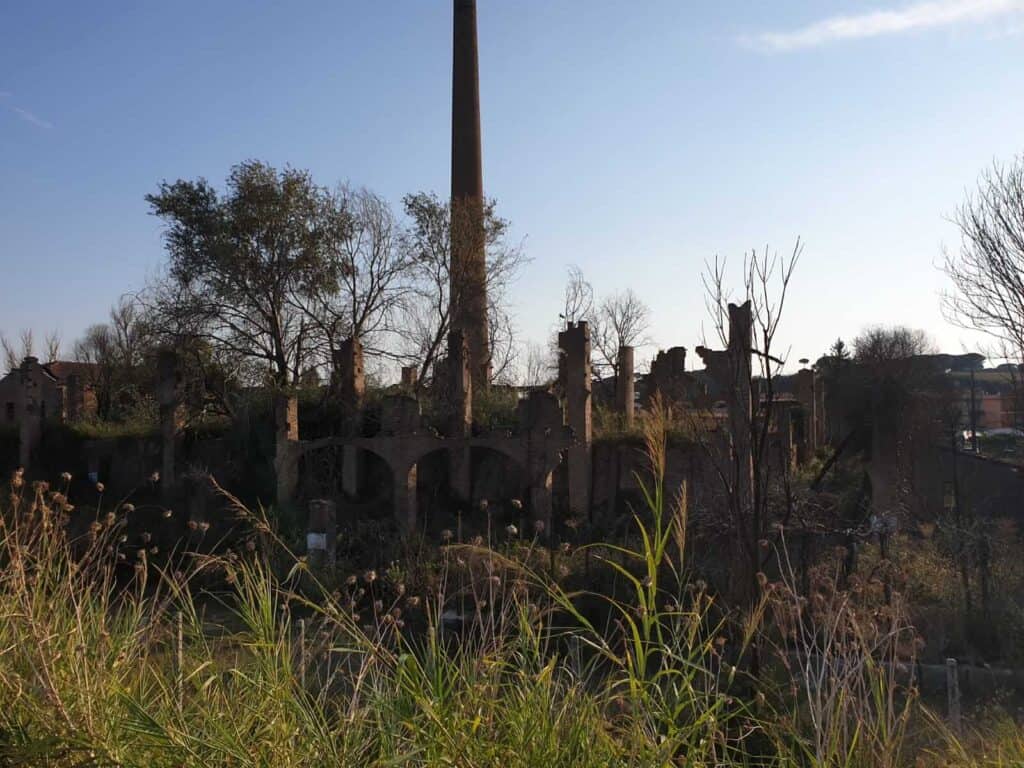
Castel Giubileo is characterized by a genuine and warm atmosphere, typical of small villages, where everybody knows everybody. The children still play outdoors freely, the grown-ups often stop to chat in the street or by the local church, the village naans continue to feed the cats and the teenagers mingle in the public park of Via Bolognola. This sense of sociality has recently begun to be shared with outsiders through the efforts of some of the local inhabitants. Valeria Magini had the town hall’ support when in September she organized the festival ‘Vivere il Quartiere’ (Living the Neighbourhood).
The festival consisted of a series of events, such as football tournaments, photographic activities, parkour training sessions, talks, screenings, storytelling workshops and music gigs. Those who took part in it —including local residents, outside visitors and cultural associations from other areas of the city— got a chance to re-discover and appreciate this little hamlet. Whether hearing from the elders at the Caffettino (the local café) or at the ‘baracca’ (the local bowls club, bocciofila Frezza), everyone had the opportunity to recollect memories of the place and trace back its changes throughout time.
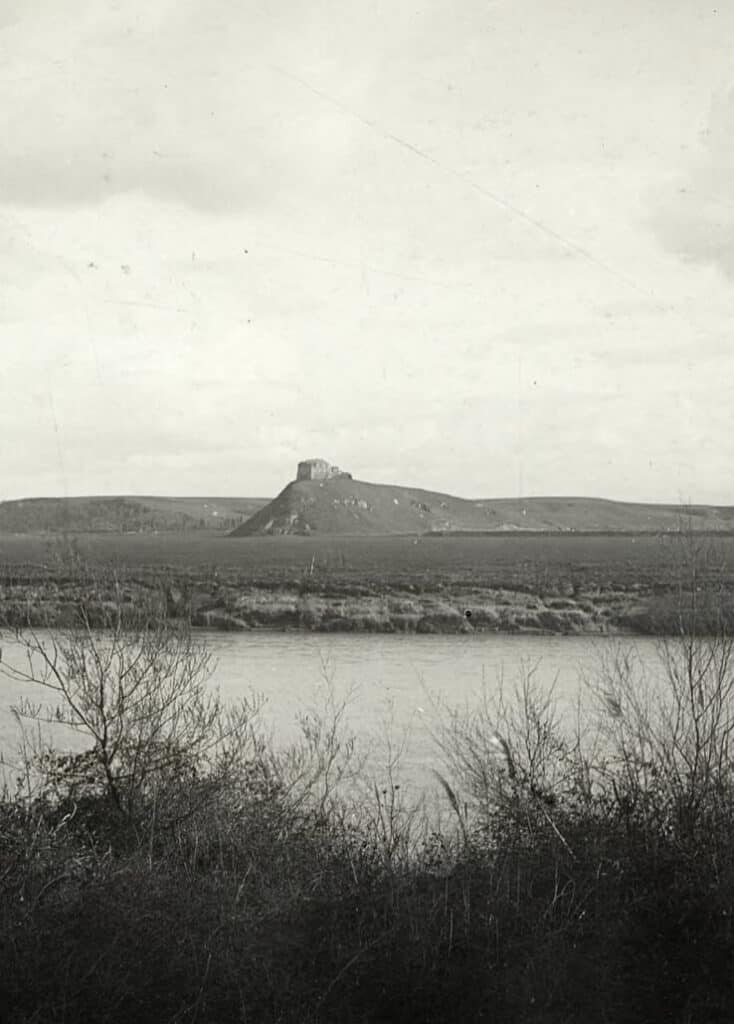

Castel Giubileo is a place where people can see a suburb naturally inserted in the Tiber valley, which is a stone’s throw from the Marcigliana —an important natural reserve. It offers a different perspective from Rome since it is a must go destination for those who want to look at the city from above and imagine the night that Garibaldi spent on top of the hill planning its attack on the Papal State. It is the place to go if you want to immerse yourself in the nature of the Roman countryside, and it is the neighborhood to visit to experience the warmth of a people who know how to tell stories.
Sightseeing and views
- Old ruins and panorama are on Salita di Castel Giubileo
- The industrial ruins are visible from the cycling lane. The iron bridge is in front of the modern Ponte di Castel Giubileo and the kiln is on the left side of the cycling lane before reaching the village
- The Park on via Bolognola
Food and drinks
- Caffettino (for lunch, coffee or happy hours)
How to get to Castel Giubileo
- By bike through the Ponte Milvio cycling lane
- By public transport:
- train Flaminio (towards Montebello) to Labaro and then a 20-min walk to Castel Giubileo
- train Flaminio (towards Montebello) to Saxa Rubra and bus 334 (toward Baseggio) to Salita di Castel Giubileo
- Bus 334 toward Baseggio from Grottarossa
- Bus 135 (toward Salaria/Piombino) to Salaria/Castel Giubileo
- Bus 039 from Saxa Rubra (toward Salaria/Piombino) to Salita di Castel Giubileo
This piece has been contributed to by Castel Giubileans, Valeria Magini, Don Fabio, Donatella Cicolani, Guglielmo Magini and Eugenio Corsetti. To them, a special thanks.


